






*** For Screens smaller than 1600 by 1024 scroll right for all buttons ***

|
|||||

|

|

|

|

|

|
|
*** For Screens smaller than 1600 by 1024 scroll right for all buttons *** |
|||||
Albert Hofmann
Albert Hofmann (January 11, 1906 - April 29, 2008) was a Swiss scientist best known for having been the first to synthesize, ingest and learn of the psychedelic effects of lysergic acid diethylamide (LSD). Hofmann authored more than 100 scientific articles and wrote a number of books, including LSD: My Problem Child. On January 11, 2006, Hofmann became a centenarian, and the occasion of his 100th birthday was the focus of an international symposium on LSD.

|

|
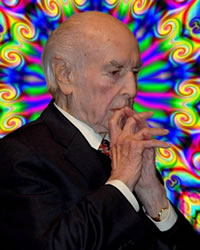
|
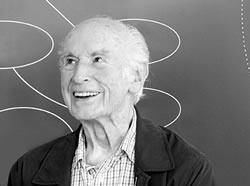
|
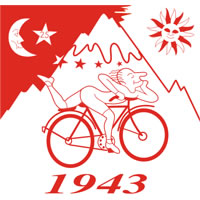
|
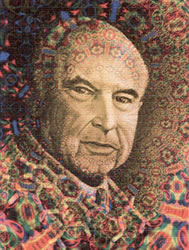
|
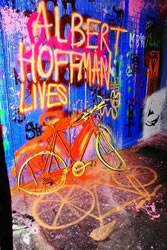
|

|
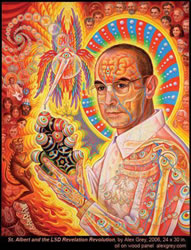
|

|

|
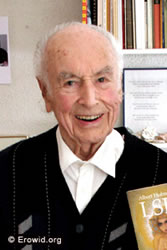
|
Life and career
Hofmann was born in Baden, Switzerland, the first of four children born to factory toolmaker Adolf Hofmann and his wife Elisabeth (born Elisabeth Schenk). Because of his father’s low income, Albert’s godfather paid for his education. When his father fell ill, Hofmann took up a position as a commercial apprentice in concurrence with his studies. At the age of twenty, Hofmann began his chemistry degree at the University of Zürich, finishing three years later, in 1929. His main interest was the chemistry of plants and animals, and he later conducted important research regarding the chemical structure of the common animal substance chitin, for which he received his doctorate, with distinction, in 1930.
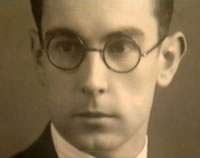
|
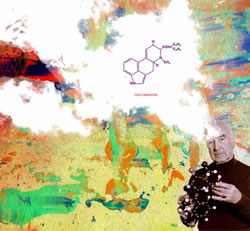
|

|
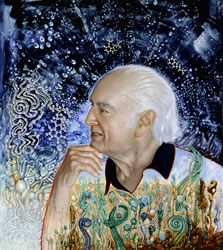
|

|
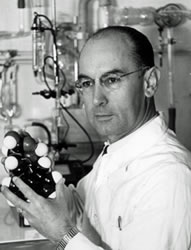
|
Main article: History of LSD Discovery and history
Hofmann joined the pharmaceutical-chemical department of Sandoz Laboratories (now Novartis), located in Basel as a co-worker with professor Arthur Stoll, founder and director of the pharmaceutical department. He began studying the medicinal plant squill and the fungus ergot as part of a program to purify and synthesize active constituents for use as pharmaceuticals. His main contribution was to elucidate the chemical structure of the common nucleus of Scilla glycosides (an active principal of Mediterranean Squill). While researching lysergic acid derivatives, Hofmann first synthesized LSD on November 16, 1938. The main intention of the synthesis was to obtain a respiratory and circulatory stimulant (an analeptic). It was set aside for five years, until April 16, 1943, when Hofmann decided to take another look at it. While re-synthesizing LSD, he accidentally absorbed a small quantity through his fingertips and serendipitously discovered its powerful effects. He described what he felt as being:"... affected by a remarkable restlessness, combined with a slight dizziness. At home I lay down and sank into a not unpleasant intoxicated-like condition, characterized by an extremely stimulated imagination. In a dreamlike state, with eyes closed (I found the daylight to be unpleasantly glaring), I perceived an uninterrupted stream of fantastic pictures, extraordinary shapes with intense, kaleidoscopic play of colors. After some two hours this condition faded away".
Bicycle Day
Three days later, April 19, 1943, Hofmann performed a self-experiment to determine the true effects of LSD, intentionally ingesting 250 micrograms of the substance, an amount he predicted to be a threshold dose (an actual threshold dose is 20 micrograms). Less than an hour later, Hofmann experienced sudden and intense changes in perception. He asked his laboratory assistant to escort him home, and as use of vehicles was prohibited because of wartime restrictions, they had to make the journey on a bicycle. On the way, Hofmann’s condition rapidly deteriorated as he struggled with feelings of anxiety, alternatingly believing the next-door neighbor was a malevolent witch, that he was going insane, and the LSD had poisoned him. When the house doctor arrived, however, he could detect no physical abnormalities, save for a pair of incredibly dilated pupils. Hofmann was reassured, and soon his terror began to give way to a sense of good fortune and enjoyment, as he later wrote ...
"... little by little I could begin to enjoy the unprecedented colors and plays of shapes that persisted behind my closed eyes. Kaleidoscopic, fantastic images surged in on me, alternating, variegated, opening and then closing themselves in circles and spirals, exploding in colored fountains, rearranging and hybridizing themselves in constant flux ..."
The events of the first LSD trip, now known as "Bicycle Day", after the bicycle ride home, proved to Hofmann that he had indeed made a significant discovery. A psychoactive substance with extraordinary potency, capable of causing paradigm shifts of consciousness in incredibly low doses, Hofmann foresaw the drug as a powerful psychiatric tool; because of its intense and introspective nature, he couldn’t imagine anyone using it recreationally.
Further research
"I think that in human evolution it has never been as necessary to have this substance LSD. It is just a tool to turn us into what we are supposed to be." -Albert Hofmann.
Hofmann became director of the natural products department at Sandoz and went on studying hallucinogenic substances found in Mexican mushrooms and other plants used by the aboriginal people. This led to the synthesis of psilocybin, the active agent of many "magic mushrooms". Hofmann also became interested in the seeds of the Mexican morning glory species Rivea corymbosa, the seeds of which are called Ololiuhqui by the natives. He was surprised to find the active compound of Ololiuhqui, ergine (lysergic acid amide), to be closely related to LSD.
In 1962, he and his wife Anita traveled to southern Mexico to search for the plant "Ska Maria Pastora" (Leaves of Mary the Shepherdess), later known as Salvia divinorum. He was able to obtain samples of this plant but never succeeded in identifying its active compound which has since been identified as the diterpenoid Salvinorin A.
Albert Hofmann in 2006In 1963, Hofmann attended the annual convention of the World Academy of Arts and Sciences (WAAS) in Stockholm.
Hofmann called LSD "medicine for the soul" and was frustrated by the worldwide prohibition that has pushed it underground. "It was used very successfully for 10 years in psychoanalysis," he said, adding that the drug was hijacked by the youth movement of the 1960s and then unfairly demonized by the establishment that the movement opposed. He conceded that LSD can be dangerous in the wrong hands.
In December 2007, Swiss medical authorities permitted a psychotherapist to perform psychotherapeutic experiments with patients who suffer from terminal stage cancer and other deadly diseases. Although not yet started, these experiments will represent the first study of the therapeutic effects of LSD on humans in 35 years, as other studies have focused on the drug’s effects on consciousness and body. Hofmann supported the study, and continued to believe in the therapeutic benefits of LSD.
Hofmann was due to speak at the World Psychedelic Forum from March 21 to March 24, 2008, but was forced to pull out because of poor health.
Death
Wikinews has related news: Pioneer chemist Albert Hofmann dies at age 102 Hofmann died of natural causes on April 29, 2008, in the village of Burg im Leimental, near Basel, Switzerland. He was 102 years old.
Books
Albert Hofmann’s autobiographical account of his experience with LSD was published in LSD: My Problem Child (1980). Hofmann also co-authored The Road to Eleusis: Unveiling the Secret of the Mysteries (Hermes Press, 1998, North Atlantic Books, 2008), a collaborative effort with mycologist R. Gordon Wasson, and classical scholars Carl Ruck and Blaise Staples, which reveals the secret mystic elixir that is at the heart of the Eleusinian Mysteries and, therefore, fundamental to the development of Western civilization. Hofmann further describes the relevance of the Eleusinian Mysteries for today’s world, and the application of psychedelic experience to the study of metaphysics, in essays published in Entheogens and the Future of Religion, (Council on Spiritual Practices, San Francisco, 1999); and discusses his relationship with LSD enthusiast Timothy Leary in Outside Looking In (Park Street Press, Rochester, VT, 1999). Also, a posthumous book by Albert Hoffman, Hofmann’s Elixir: LSD and the New Eleusis, collecting the last essays the author wrote before dying, is in the works and will be released Feb 24th, 2010.
Albert Hofmann in 1993
Born January 11, 1906(1906-01-11)
Baden, Switzerland
Died April 29, 2008 (aged 102)
Burg im Leimental, Switzerland
Residence Switzerland
Nationality Swiss
Fields Chemist
Alma mater University of Zürich
Known for Synthesis of LSD-25
|
INTS The Institute of Non-Theoretical Science General Interest Galleries Rebel Real Rufus Contact Namron Soar Nsoar@tbaytel.net |
---------------------------- |
All Voice Recordings (115 Mp3’s) |

|
©